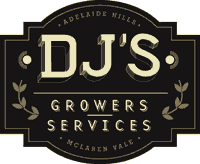The importance of the post-harvest period is largely determined by climate, variety, yield, and management prior to harvest. Vines will tolerate a season or two with limited post-harvest irrigation, but productivity will eventually be reduced if this continues over many seasons. In the same vain they are thought to tolerate excessive irrigation and fertiliser for one or two seasons before the vine becomes unbalanced.
Shiraz reshooting from excessive water and fertiliser application post-harvest.
Clearly in the picture below the rate of fertiliser and irrigation has been too high and the vines have re-shot.
For conventional vineyards DJ's also recommend using 'soft' fertiliser products instead of Urea which is straight Nitrogen. DJ's use and recommend specialist post harvest fertiliser liquid blends which contain a combination of Nitrogen, Phosphorous and Potassium.
We recommend this because:
Like carbohydrates, grapevines require a supply of nutrients from stored reserves to support growth in early spring. Nitrogen in the roots and wood follows a similar pattern to carbohydrates and post-harvest applications will influence the nitrogen status of the vine in the following season.
These products are highly soluble.
The role of other nutrient reserves is less well understood, but post-harvest uptake of phosphorus does appear to be important. To a lesser extent, magnesium, calcium and potassium uptake after harvest will also contribute to growth in the following spring. Little is known about the role of other nutrients carried over winter in grapevine tissues.
With all organic options it is best to check with us and your certification body before use!

